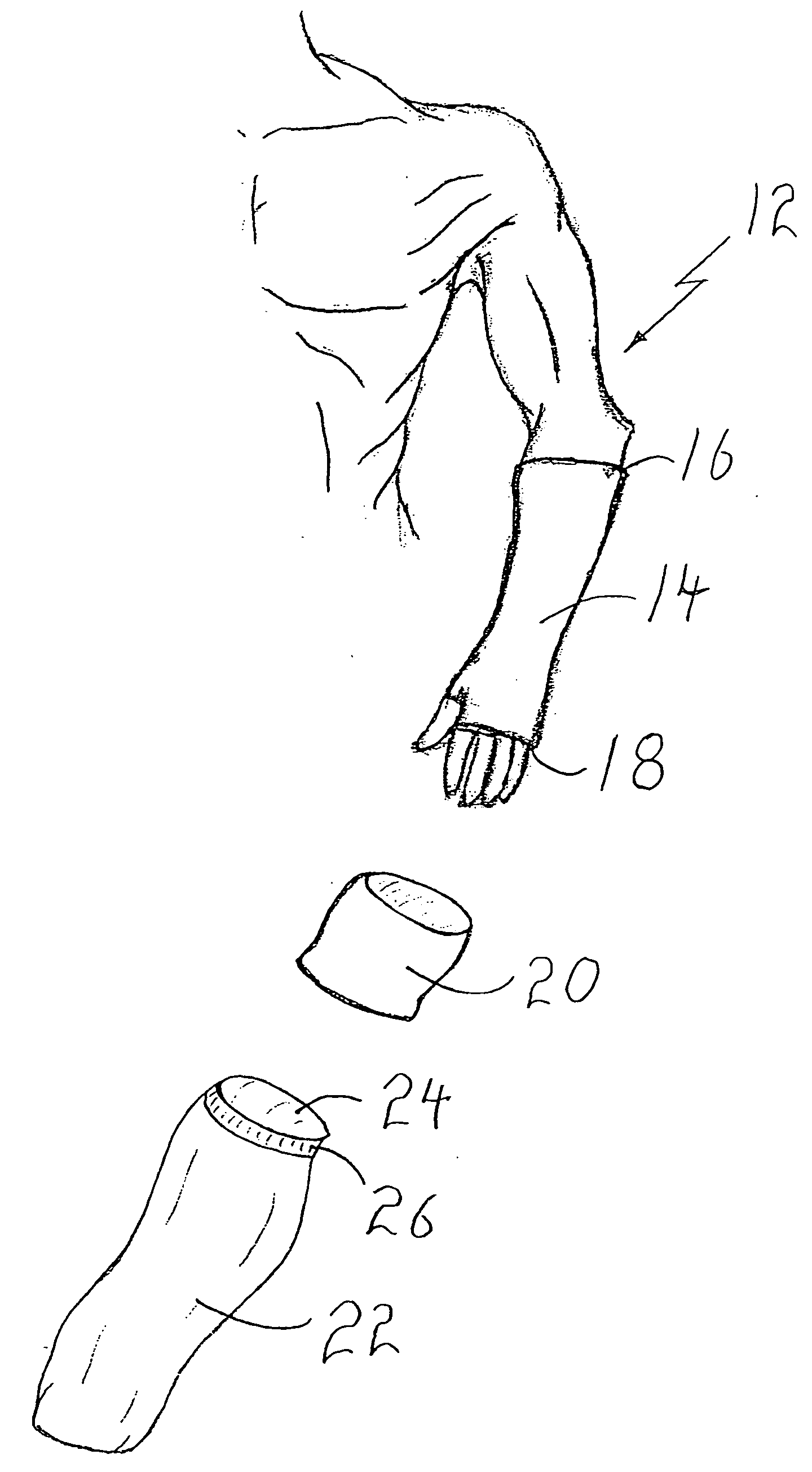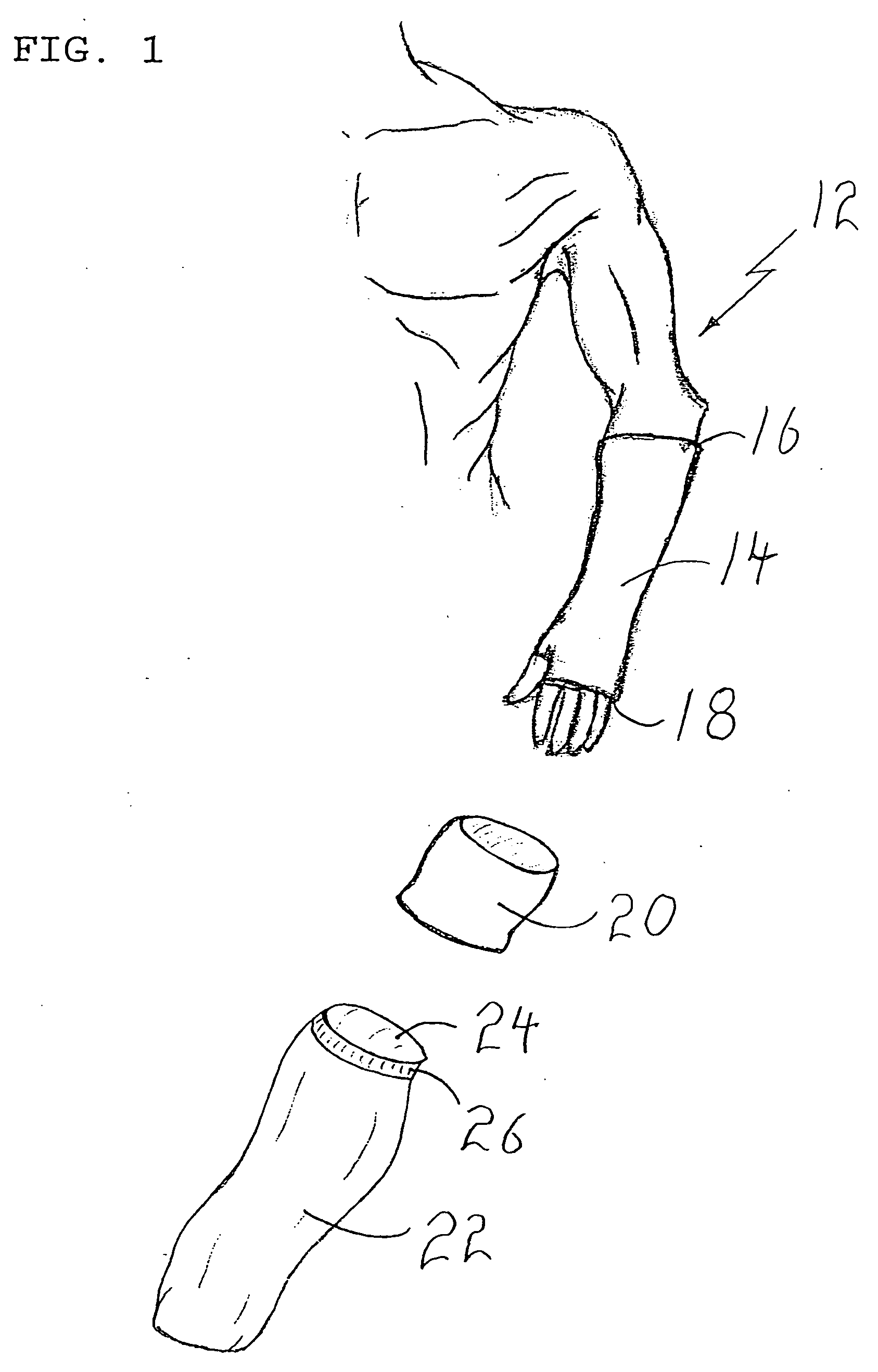Method of sealing an opening on a waterproof covering for a limb
- Summary
- Abstract
- Description
- Claims
- Application Information
AI Technical Summary
Benefits of technology
Problems solved by technology
Method used
Image
Examples
Embodiment Construction
[0017] The preferred method of sealing an opening on a waterproof covering for a limb will now be described with reference to FIGS. 1 through 5.
[0018] Referring to FIG. 1, there is illustrated a limb 12 having a cast 14. Cast 14 has been used as a concrete example of a typical affected area that one might wish to shield from water on a limb. It will be appreciated that there are other types of wounds, such as tensor bandages, stitches, or tattoos. It will also be appreciated that there may be reasons to keep an affected area dry on a limb, that have nothing to do with to wounds or injuries of any kind. The affected area marked by cast 14 has an upper extremity 16 and a lower extremity 18. There is also illustrated a form fitting waterproof elasticised sleeve 20 and a waterproof covering 22. There will now be described how the cast is protected from water using form fitting waterproof elasticised sleeve 20 and waterproof covering 22 in accordance with the teachings of the present in...
PUM
 Login to View More
Login to View More Abstract
Description
Claims
Application Information
 Login to View More
Login to View More - R&D
- Intellectual Property
- Life Sciences
- Materials
- Tech Scout
- Unparalleled Data Quality
- Higher Quality Content
- 60% Fewer Hallucinations
Browse by: Latest US Patents, China's latest patents, Technical Efficacy Thesaurus, Application Domain, Technology Topic, Popular Technical Reports.
© 2025 PatSnap. All rights reserved.Legal|Privacy policy|Modern Slavery Act Transparency Statement|Sitemap|About US| Contact US: help@patsnap.com



